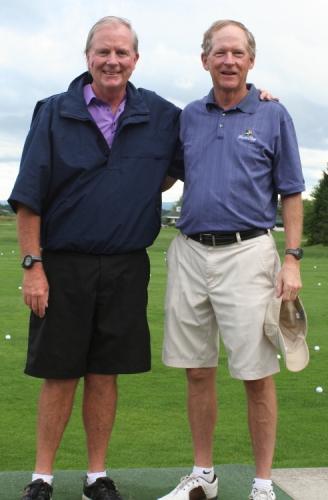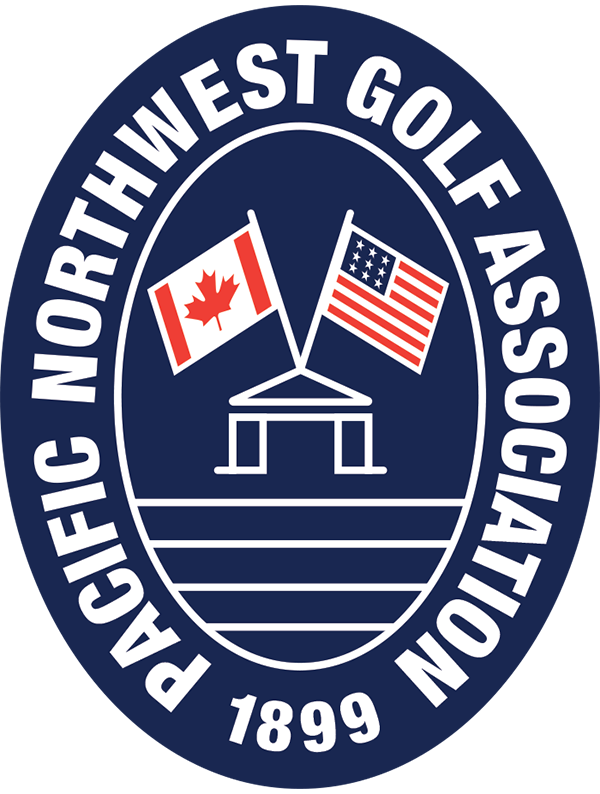State of the Game

Gay Davis talks about Pumpkin Ridge’s legacy, laments its losses, and looks forward to its future
by Bob Robinson
Gay Davis is among those thinking that the technology-improved ball is the culprit in creating a big problem of golf – courses once long enough to host major championships gradually becoming too short.
“Just cool off the ball,” said Davis, a co-founder of the 36-hole Pumpkin Ridge complex west of Portland near North Plains. “Roll back the ball two percent (of distance) a year for five years. I really believe that gradual decrease would take care of it.”
Davis is particularly frustrated by the problem because he and fellow founders Marv French and Barney Hyde have seen a long-time goal of Pumpkin Ridge being host to a U.S. Open turn into a pipe dream.
“It was something we talked about back when we decided to go ahead with the project,” Davis said. “We talked about eventually being host to all 13 of the (USGA) championships, with the Open being the pinnacle.”
At first, all steps seemed to be heading in the desired direction. The USGA sent the U.S. Amateur to Pumpkin Ridge in 1996, the U.S. Women’s Open in 1997 and again in 2003. In 2000, the club became the first to stage the U.S. Junior Amateurs – boys and girls – simultaneously at the same venue. The U.S. Women’s Amateur followed in 2006. The events all were highly successful and USGA officials expressed delight.
At the U.S. Amateur in 1996, USGA Executive Director David Fay said: “There would be no downside to having a U.S. Open at Pumpkin Ridge.” Judy Bell, the USGA president at the time, added: “Frankly, I could see Pumpkin Ridge hosting each of our championships over the course of time.”
A year later, Fay, who retired at the end of 2010, said: “Pumpkin Ridge has a number of things going for it (in bidding for the Open) – the course, the infrastructure, the people involved and the golf community.”
Discussions went so far that USGA officials studied Pumpkin Ridge’s two courses and determined that, with alterations, the Ghost Creek course would be best as an Open site. Contemplated alterations would have reduced the course’s par to 70 and increased its maximum length from 6,950 yards to about 7,200 yards.
“But realistically, that was about as long as we could make it,” Davis said. “We were sort of dropped out of the loop when the USGA decided that it wanted 7,500 yards.”
So, instead of Pumpkin Ridge becoming the first club in the Pacific Northwest to be host to the Open, that honor goes to Chambers Bay on Washington’s Puget Sound which will have the coveted event in 2015. Chambers Bay, a links-style layout designed by Robert Trent Jones Jr., was host to the 2010 U.S. Amateur and can play to 7,742 yards with a par of 71.
Actually, these developments didn’t surprise Davis, a two-time Oregon Amateur champion. Not after he played a practice round at Pumpkin Ridge’s Witch Hollow course with eventual champion Tiger Woods before the 1996 U.S. Amateur.
“We got to the third hole (a 414-yard par-4), one of Witch’s toughest holes,” Davis said. “I hit a good drive and had a 6-iron left to the green. Tiger bombed a drive over the corner of the dogleg, landing on an upslope where he got virtually no roll. He was just 60 yards from the green. That’s when I became aware of the game’s coming evolution.”
So, Davis, French and Hyde – in partnership with former majority owner Sherigu Ito’s daughter, Kumiko – continue to seek USGA national championships. Bids are in for the organization’s Mid-Amateur and Senior Amateur. Meanwhile, Pumpkin Ridge has been host to the LPGA’s Safeway Classic the last three years.
“Now, if something just could be done to cool off the ball, maybe courses like ours could again be in the running to have the Open,” Davis said.
Bob Robinson covered golf for The Oregonian for more than 30 years. He has covered 24 major championships, two Ryder Cups, and more than 30 LPGA Tour events. During his career, Bob has been named the Oregon Sportswriter of the Year, and has been awarded the Dale Johnson Media Award by the Oregon Golf Association and the Distinguished Service Award by the Northwest Golf Media Association.





